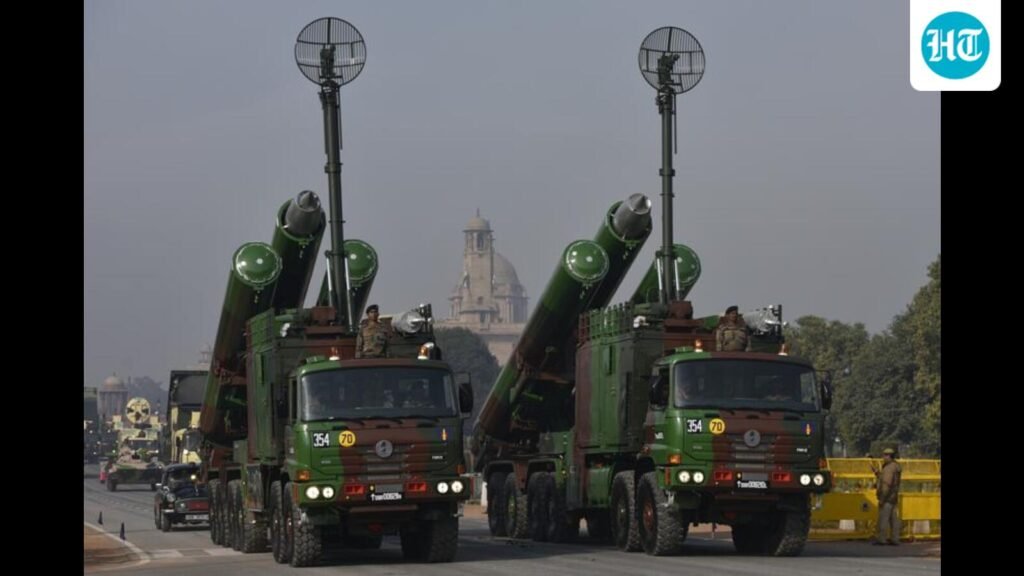
After the success of Operation Sindoor and the reports that terrorist groups in Pakistan might be changing and dispersing their hideouts, the chief of the Indian Air Force (IAF), Air Chief Marshal AP Singh, has emphasized that the IAF would continue to destroy the hideouts using precision targeting. “We can destroy them and their hideouts,” Singh said, “Our options will remain the same in this matter.”

Given the demonstrated success of precision targeting during Operation Sindoor, the IAF chief rightly wants to stick to the proven formula of using guided bombs and Cruise missiles that hit ground targets with great accuracy. However, the political and military leadership must account for some learning by the adversary and make plans to lock in the advantages secured during Operation Sindoor. India must also assume that Pakistan would receive the requisite assistance from China and the US to overturn India’s current advantages. Therefore, India must make the following short-term, medium-term, and long-term steps to sustain the ability to hit ground targets in Pakistan accurately.
In the short-term, India must make plans to use ground-launched Brahmos missiles. It is easy to see why India preferred air-launched Brahmos (and other Cruise) missiles in May 2025. The aerial platforms give IAF the flexibility to launch from new positions and also stay away from the coverage of Pakistani air-to-air and surface-to-air missiles. The use of ground-launched cruise missiles, on the other hand, might give away the launch locations and become vulnerable to counterattack. However, the heat signature in cruise missile launches is generally low, which makes it challenging to detect by space-based infrared sensors. Hence, China will have limited ability to detect such launches and help Pakistan. If Pakistan can still detect the launch locations using airborne radar, India can employ mobile platforms to launch Cruise missiles, thus making it difficult for Pakistan to attack them. Unlike fighters that need to stay away from the adversary’s air defense network — suppressing the air defense may not always be feasible or desirable from an escalation management perspective — mobile ground-based platforms can target from close to Pakistan’s borders and hide until the next launch. This will give Brahmos greater targeting depth in Pakistani territory than air-launched missiles fired from distant locations.
In the medium-term, India must make arrangements to launch cruise missiles from submarines. According to public information, the Indian Navy’s Brahmos arsenal is currently meant to be fired from its fleet of destroyers and frigates. However, the surface fleet is likely to be vulnerable to Pakistani anti-ship missiles despite the option of mobility. Submarines, on the other hand, can be reliable launch platforms because they can escape counterattack by operating from the depths of the ocean. Detecting and tracking submarines still remains one of the most challenging tasks in modern military operations despite plentiful investments in anti-submarine warfare (ASW) sensors by the great powers. India has previously test-launched Brahmos from a submerged platform. It must now proceed to integrate the missiles into the country’s submarine fleet. Having the capability to launch Cruise missiles from air, mobile ground platforms, and submarines, India can complicate Pakistan’s ability to defend its terrorist hideouts and military infrastructure tremendously.
Finally, in the long-term, India must do the following three things.
First, India must extend the range of its cruise missiles. There are reports indicating a plan to extend the range of Brahmos to 800km. This would allow the IAF fighters to target most of Pakistan from standoff ranges. Russia fields cruise missiles with ranges reportedly exceeding 4,000 kilometers — its nuclear-powered Burevestnik missiles, currently being tested, have a range of 14,000 km. India must invest in long-range cruise missiles not just for air-launch against Pakistan, but also in China-related contingencies.
Second, India must make efforts to indigenise its inventory of cruise missiles and guided bombs to ensure that third parties cannot interfere with the guidance systems. Whereas Brahmos has rightly built-in redundancies to reduce reliance on the US-owned Global Positioning System (GPS), other systems acquired from France (SCALP-EG and Hammer) and Israel (Spice, Rampage, and Crystal Maze) depend on GPS to varying degrees. Given the growing bonhomie between the US and Pakistan, India cannot be certain that the guidance systems of these expensive weapons acquired from abroad will not be interfered with.
Third, India needs to augment Brahmos’s capability to penetrate hardened and underground targets. It must also be mindful of this requirement when acquiring future precision-targeting weapons. Currently, Spice, Rampage, SCALP-EG, and Crystal Maze have some capability to penetrate buried targets, but they are all foreign-acquired systems, which makes them vulnerable to supply shocks and, as mentioned here, operational interference by third parties. Given India’s success in precision targeting in May, Pakistan may choose to harden its aircraft shelters, and its terrorist groups might move to, literally, underground locations. India must continue to retain the ability to penetrate those targets.
The success obtained in Operation Sindoor cannot be taken for granted in a future conflict. India must account for Pakistan investing in countermeasures against systems that performed well for India. It is also likely to get assistance from China and the US. India must anticipate the challenges and plan accordingly. The above measures, while not exhaustive, provide suggestions on what India must do to retain the targeting advantage it demonstrated in May 2025.
Kunal Singh is a Stanton Nuclear Security Postdoctoral Research Fellow at the Harvard Kennedy School’s Belfer Center for Science and International Affairs. The views expressed are personal




